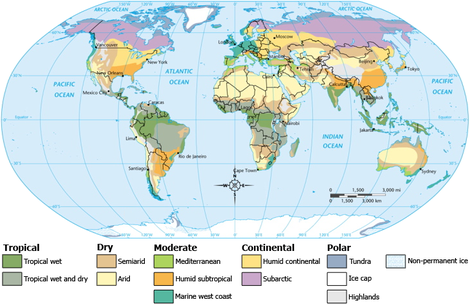http://www.youtube.com/watch?v=95TtXYjOEv4&feature=related
Climate includes the statistics of temperature, humidity, atmospheric pressure, wind, rainfall in a given region over long periods. Climate can be contrasted to weather, which is the present condition of these elements and their variations over shorter periods.
A region's climate is generated by the climate system, which has five components:
-atmosphere,
-hydrosphere,
-cryosphere,
-land surface and
-biosphere.
The climate of a location is affected by its latitude, terrain, and altitude, as well as nearby water bodies and their currents.
Climates can be classified according to the average and the typical ranges of different variables, most commonly temperature and precipitation. The most commonly used classification scheme was originally developed by Wladimir Köppen.
.
